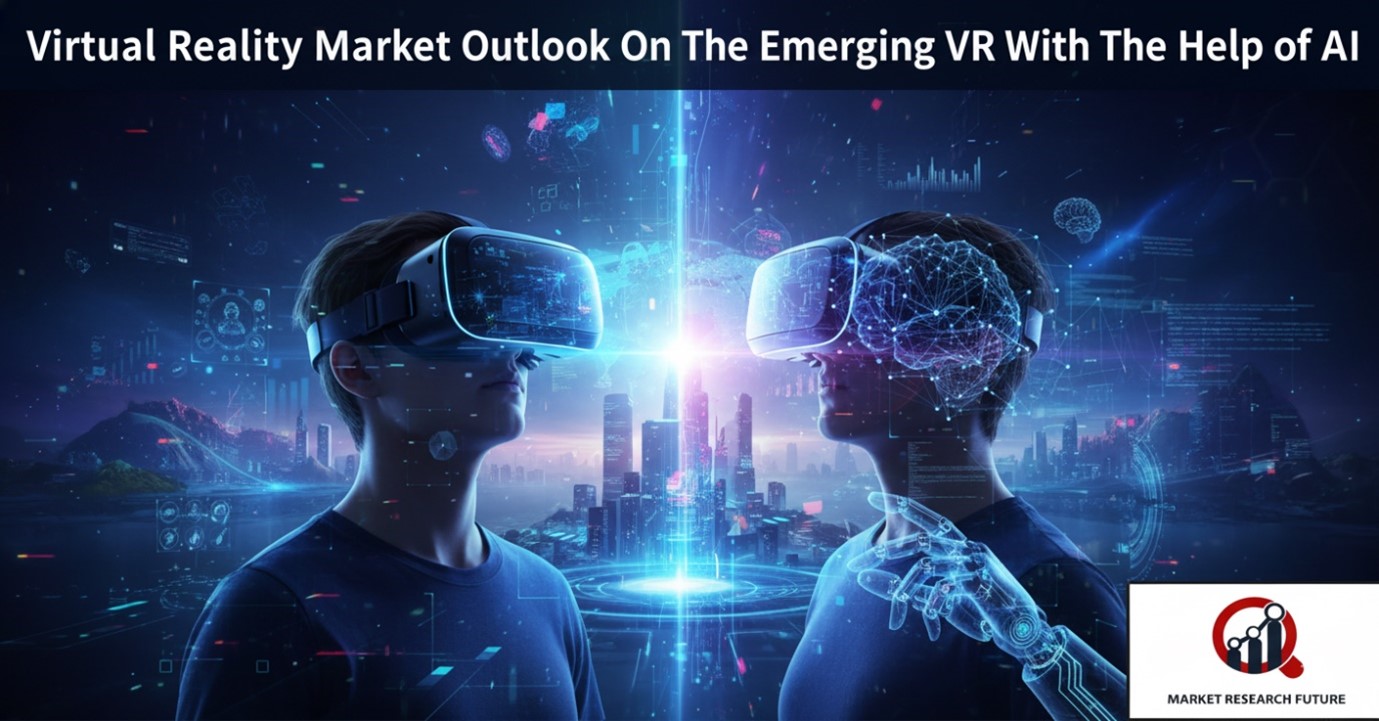
Virtual Reality Market Outlook
Virtual Reality (VR) makes fully immersive, computer-generated worlds that feel like real life. With headsets, glasses, or bodysuits, users can experience a 3D world with all of their senses. This changes the way we interact with entertainment, learning, and business. VR started out as a popular technology for gaming and entertainment, but it has quickly spread to fields like healthcare, education, real estate, manufacturing, and defence. To reduce mistakes, doctors and nurses use VR for training, and architects and designers use it to see how projects will look in real time. Companies are also using VR for virtual product demos and interactive online meetings, which make it easier for people to work together and make decisions.
VR is becoming more than just a way to see and hear things as technology improves. Businesses are trying to add more sensory inputs to make interactions feel even more real. VR is changing the way people shop online by letting them look at products in 3D before they buy them. Marketing teams are using VR to make interesting campaigns that grab people's attention and get them to buy.
Increasing the number of VR applications during the COVID-19 pandemic
The COVID-19 pandemic first messed up VR production because it stopped the flow of goods and limited the number of workers. But the technology quickly showed how useful it was in many fields. VR was used for training, working together from a distance, and getting people involved in healthcare, education, gaming, entertainment, manufacturing, retail, and defence. The crisis sped up the use of VR in business and showed how it could improve safety, productivity, and customer engagement.
Making VR easy to use
For VR experiences to be easy to use, hardware and software must work together perfectly. Sensors on VR devices keep track of where users are moving and send that information to the virtual world in real time. It can be hard for developers to make virtual content that meets user expectations while still being realistic and immersive. As VR becomes more popular, making it easy to use and available to everyone is very important for getting people to use it.
Problems with using VR
Even though VR is becoming more popular, there are still problems with its use. Technological illiteracy, lack of knowledge, and lack of experience can slow down market growth, especially in developing areas with poor digital infrastructure. Businesses and schools that want to use VR solutions effectively may find it hard to find people with the specialized skills needed to create and maintain VR systems.
What is making VR and AR work together more?
The merging of Virtual Reality (VR) and Augmented Reality (AR) is being driven by the need for immersive, interactive experiences. Gaming has changed so that players can now be part of dynamic, multidimensional environments. VR and AR technologies now create experiences that are very engaging by simulating realistic sights, sounds, and sensory feedback. For example, sports fans can watch live games in 360 degrees from home and get real-time stats, player insights, and interactive views. Concerts, theatre shows, and amusement park rides are also using VR to reach people who can't be there in person, giving them experiences that go beyond what they can do in real life.
These new ideas are making people more interested in digital content and making VR more useful in personal, professional, and entertainment settings. AI and VR working together are making virtual environments even smarter, more adaptable, and more responsive to how users act.
Final Thoughts
Virtual reality is no longer just for games; it's changing business, education, health care, and entertainment. VR and AI are changing the way people learn, work, and play by giving them immersive, interactive experiences. Adoption is growing, though there are still problems like a lack of technical knowledge and infrastructure. These include improvements in hardware, software, and sensory integration.
As businesses keep looking into VR's potential, its uses are likely to grow quickly, providing more interesting, personalized, and immersive experiences. In the next few years, VR and AR will change how we interact with digital content, making virtual experiences a normal part of life.